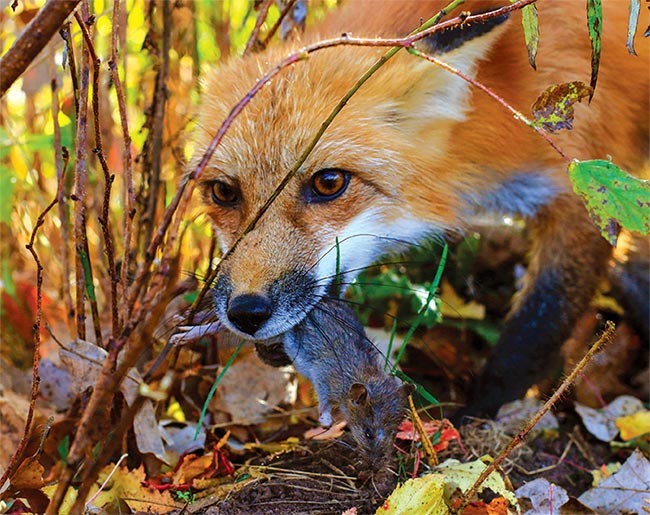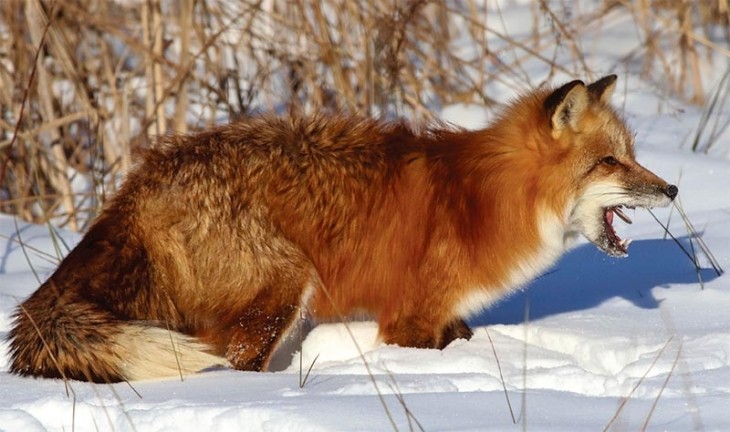The familiar red fox is the most widely distributed carnivore on the planet. Throughout North America, I’ve admired these handsome animals in arctic Canada’s barrenlands, southern coastal marshes, and of course here in the northern forest region’s interspersion of forest and farm-edge habitats. Across the lower 48 US states and parts of Canada, the extirpation of wolves in the nineteenth and early twentieth centuries, combined with the spread of agricultural clearings and croplands, has been a boon to Vulpes vulpes.
Circuitous running tracks imprinted in autumn’s first snow tell of a fox’s foraging frenzy. Beneath the snow, voles are hidden from view in snow tunnels; however, their sounds are detectable to the fox. A fox’s acoustic acuity is so keen that it can pinpoint a rodent’s scuttling movements and chewing sounds. With a cat-like hunting repertoire, the red fox’s secret to success is all about ambush; they freeze in place, listen to locate, then lunge and leap to land precisely upon their intended prey.
This red fox and a barn cat had a kind of partnership. The cat would kill mice, voles, cottontails, grouse, and even rats – and proudly present the uneaten prey to a pleased farmer. Sitting on the edge of a field, the fox routinely waited for the prey to be disposed of. I placed this rat near a game trail on the field’s far edge, then, hidden in nearby cover, I waited with my camera. I periodically kissed the back of my hand, making squeaky wee beastie cries, hoping to entice the fox to return. Suddenly, without warning, it fluidly trotted into view and snatched up the rat. I’ll never forget its parting glance.
One morning I heard distinctive vulpine sounds and crept forward ever so slowly to have a look. This vixen was on top of a large log overlooking a meadow. Tracks told of her running about with a few pouncing body dive impressions here and there. Now, she was still as a statue, head cocked, her gaze locked – she was on to something! Off the log she launched and landed nearly seven feet below – a perfect foxy move. She pulled her face out of the snow, threw her head backwards, and made a series of open-mouthed biting movements. The tail of her rodent breakfast was visible for less than a second before, with one more chew and gulp, down the hatch it went.
Perfect red fox tracks that register in soft earth or shallow snow are easily recognized for their pea-sized toe impressions around the outer edge of the track circle and a slightly curved boomerang-shaped “bar.” The bar is an imprint of the front foot’s callus ridge – the part of the middle pad that protrudes through the fur that covers the rest of the pad. Unlike other canids, this callus ridge registers as a narrow, near-horizontal impression and is located at the base of the track circle. The balance of the track circle – between the toe and middle pad imprints – lacks any pad marks at all, although this portion of the track may show faint marks left by the animal’s abundant foot fur. This negative space is diagnostic for red fox, as opposed to coyote, dog, or wolf, whose robust pads nearly fill the track circle. A red fox’s hind feet tracks are smaller than those of the forefeet and register a slightly circular middle pad imprint instead of a horizontal bar.




